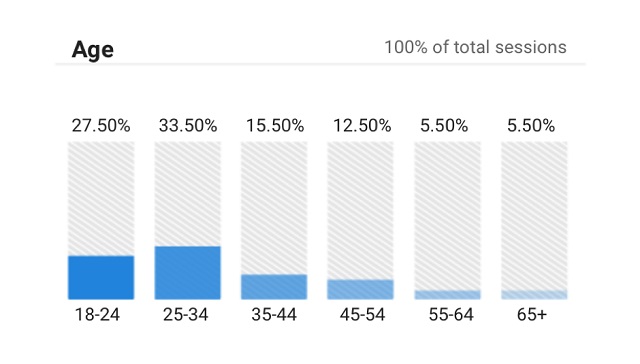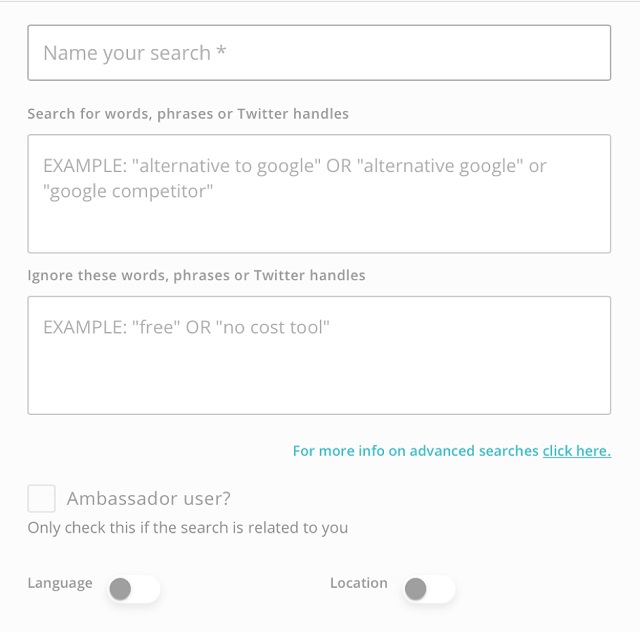
How often are you checking your contents’ and your blogs’ analytics? And I’m not talking about your general traffic numbers, but a really in-depth look at your numbers. One of the biggest reasons why any blogger should do this regularly, is because it can be of huge help for improving their own content. And in this blog post, I want to show you exactly how to use analytics to improve your blog content.
Understand your audience
The first step in creating better, more engaging content for your audience, is to understand what your audience, your readers, actually want to read about – and grow your audience in the process.
What are their interests? What are their needs, their pain points? And most importantly, who are they, exactly?
Reader personas are essentially avatars of your target readers, listing who they are, what they do, what their interests are and so on.
For example, a reader persona could include:
- Demographics: age, sex, location, language
- Education: level of education, industry
- Work: what industry they work in, what their position is and so on
- Interests: what interests them, what are their passions and hobbies, where do they spend their free time, and so on
- Needs: what needs do they have (and can you meet those needs?)
You’ll most likely need to create several different reader personas to cover all of the different types of people you’re targeting with your content.
Then, use these avatars to inform your content: what would each persona be interested in reading more about? What do they want or need to learn about? What content can you create based on their interests?
In order to start creating these personas, though, you’ll also need the stats to back them up. One of the best places to start is with your own readers, by using your Google Analytics to identify different reader personas.
Simply click on ‘Audience’ in your menu in the left-hand side of the screen and you’ll be able to access all of the information you need about your readers, from age and gender, to their interests and the browsers and networks they use to access your website.

Another way of gathering the information you need for your personas is to study similar websites’ traffic to see what kind of traffic they get. To do this, you can use a tool like Alexa – you can get some relevant information (age, gender, education etc.) for free, or create an account to find out more:

Learn from your best-performing content
Another way of using analytics to improve your content is to look at your best-performing content and your blogging analytics to understand what makes it so successful – and to figure out how to replicate that success.
Use the Google Analytics Behavior Flow report to examine your site content in detail and see how much traffic each piece of content is getting.
Beyond that, though, you should also try to evaluate the quality of that traffic – i.e. traffic that spends time on your website and that takes some sort of action. Look into:
- How much time are they spending on your website?
- What is the bounce rate?
- How many pages are they viewing on your website?
- What goals are they completing? You can use Google Analytics goals to keep track of the different actions that can be taken on your blog, such as buying something, viewing a certain video, accessing your services page or your landing page.
Once you’ve gathered all of this information about your traffic, you can start evaluating the success of your different website content, so as to understand why some of it gets more (and better) traffic and how you can use this knowledge in the future, when you create new content. Usually, the common links are:
- The headlines – a really good headline can get you huge boosts in social media shares and in traffic.
- The value offered – another reason for very successful blog posts is that they respond to a certain need and they’re offering real value to your readers. For example, how-to posts and listicles that provide useful information will likely get more shares and more traffic.
- Promotional strategy – have you done anything different to promote a highly successful post? Or maybe the right social influencer shared it – sometimes, the reason for success is as simple as that.
Monitor social media to understand your audience and the industry
Social media is where content thrives, where it becomes viral. It’s social media users that are reading all of this available content and by sharing it and engaging with it, they are deciding the fate of its success.
So, if you want to really understand your audience and your niche, then you need to go on social media and listen to its users consistently.
In order to do this, you have the option to use all kinds of tools – for example, social media management tools like Agorapulse have pretty complex monitoring options for multiple keywords, keywords to be excluded from your search, as well as language and location.

Alternatively, you can also use dedicated monitoring tools, such as Brand24 or Brandwatch, both of which allow you to monitor the entire web, and not just social media. Once you have the tool at hand, start brainstorming ideas for keywords in your niche, and write down a list of them. These are the keywords you’ll want to monitor in order to keep up with all the latest and most popular content being shared, as well as with top influencers in your industry.
As you monitor these results regularly, keep an eye out on what type of response they’re getting from audiences:
- How many shares are they getting?
- How many comments and likes?
Like when studying your own contents’ analytics, try to understand what it is about these pieces of content that draws people to them? What makes them want to share and engage with them?
Conclusion
The world of content is extremely competitive – there’s simply too much content being published every day, or better said, every second of every day, that only the best can really stand out and get the readers they want.
One of the best ways to become a successful content writer and publisher is to truly understand the market and, perhaps more importantly, your audience. The more you know about who they are, what their interests are and what their needs are, the better equipped you will be to provide them with exactly the type of content that they want to read, see or interact with.
Check your content analytics consistently, as trends and people change and evolve; write about what you know and like, but cater it to your audiences, in a way that appeals to them, and it will help you get more readers, and help you make your existing readers, happier.
